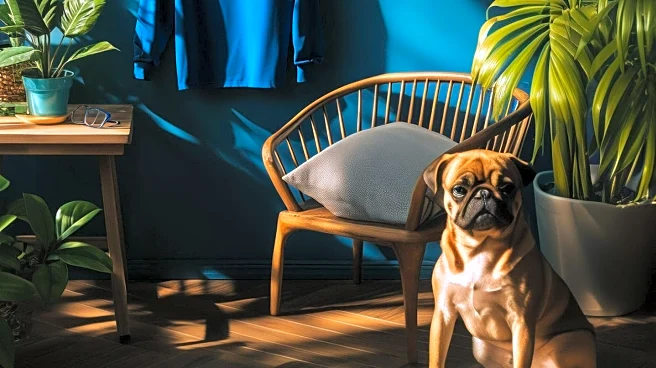What's Happening?
Linda Brettler, an architect and advocate for historical preservation, has restored a midcentury home designed by Raphael Soriano in 1964. The house, known for its aluminum framework and sliding glass doors, was originally built for Albert Grossman, an aluminum manufacturer.
Brettler purchased the home in 2021 for $3.14 million and has worked to maintain its original features while updating necessary elements. Despite assumptions that she would modernize the home extensively, Brettler has preserved key aspects such as the sliding glass doors and original kitchen design, emphasizing the home's historical significance. The house, designated a Los Angeles Historic-Cultural Monument, will be open for public tours sponsored by the American Institute of Architects Los Angeles.
Why It's Important?
The restoration of Raphael Soriano's midcentury masterpiece highlights the importance of preserving architectural history while adapting to modern needs. Brettler's approach demonstrates a balance between maintaining historical integrity and ensuring functionality, which is crucial for the conservation of cultural landmarks. This project serves as a model for architects and preservationists, showcasing how historical homes can be revitalized without losing their original charm. The public tours offer an opportunity for the community to engage with architectural history, fostering appreciation and awareness of midcentury design.
What's Next?
The restored home will be featured in a public tour as part of the American Institute of Architects Los Angeles' annual Arch Tour Fest. This event will allow visitors to experience the unique design and historical significance of Soriano's work firsthand. Brettler's restoration may inspire further preservation efforts in the architectural community, encouraging more projects that honor historical designs while accommodating contemporary living standards.
Beyond the Headlines
Brettler's restoration project raises questions about the ethical considerations in architectural preservation. It challenges the notion that historical homes must be modernized extensively to be livable, suggesting that preserving original features can enhance the home's character and historical value. This approach may influence future preservation practices, promoting a deeper respect for architectural heritage.














